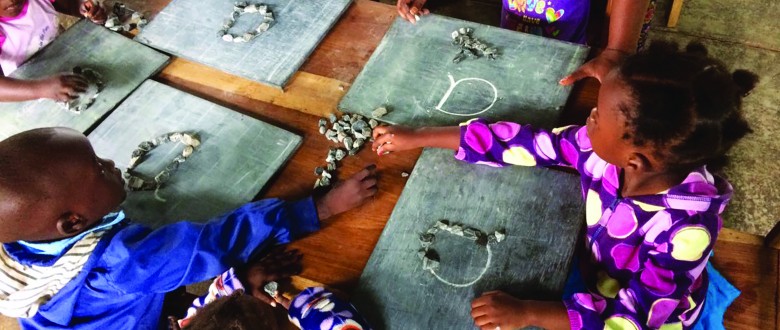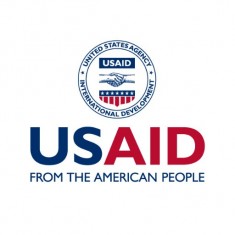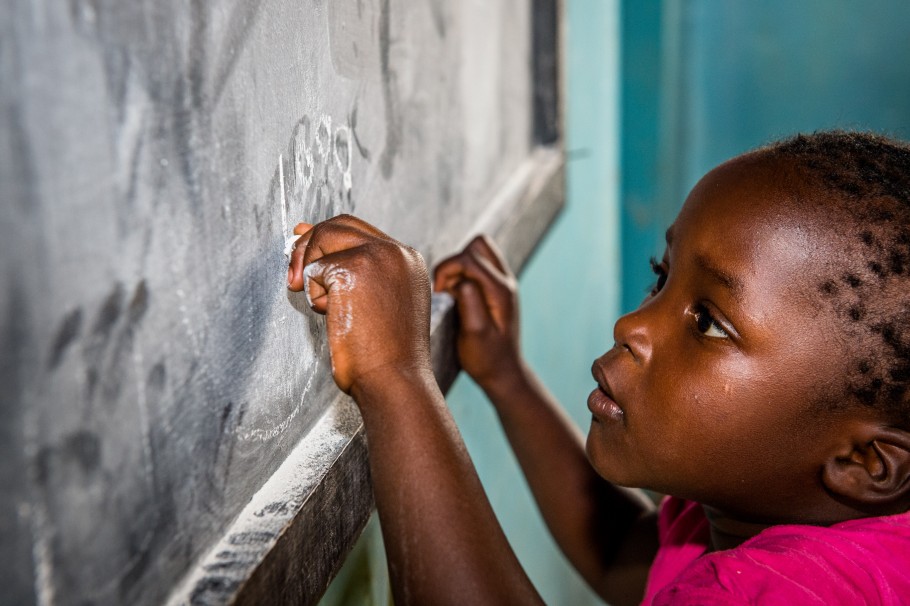
The USAID Let’s Read project improves literacy outcomes for learners in Zambia. One of the aims of the project is the development of emergent literacy in preschool to ensure a smooth transition to primary school. As an implementing partner in the programme, VVOB supports early childhood teachers in implementing play-based emergent literacy activities.
USAID Let’s Read explained
Despite significant efforts and investments by the government of Zambia in the provision and quality of early childhood education and primary education, student reading levels in Zambia’s early grades of primary remain low. More than two-thirds (64 per cent) of Zambia’s second grade readers are not able to read a single word.
The USAID Let’s Read project, a $48 million five-year basic education programme, assists Zambia’s Ministry of General Education to improve reading outcomes for approximately 1.4 million children attending Zambian public and community schools, from preschool up until grade 3 in five target provinces (Eastern, Muchinga, North Western, Southern and Western province). Implemented by Education Development Center (EDC) in partnership with VVOB, Kentalis, and Resonance, the USAID Let’s Read project supports teachers, school leaders, provincial and district education officials as well as parents, local communities and the private sector to prioritise and improve literacy instruction for Zambia’s young learners.

Emergent reading: ticket to primary
Learning to read is a very complex process that involves different sets of knowledge, skills and cognitive processes. Development of these knowledge and skills sets does not begin the day a child walks into primary school. In fact, learning to read starts at an early age, well before formal instruction is involved in primary school.
For instance: Before children learn to read, they need to learn that printed text carries meaning. They need to be able to identify the sounds that, when put together, form a word. They need to develop their spatial orientation as reading (most commonly) happens from left to right and from top to bottom – or in a different structural direction. They need to be able to distinguish between letter shapes that look alike (e.g. ‘i’ and ‘f’, ‘b’ and ‘d’, ...). Etcetera.
The development of these knowledge, skills and attitudes needed for learning to read is what is called ‘emergent reading’.
In order to prepare children to learn to read in primary school, the early childhood education (ECE) component of the USAID Let’s Read project focuses on improving emergent literacy teaching practices in Zambia’s preschools. This component is implemented by VVOB. It aims to support teachers to provide play-based emergent literacy activities to their learners and ensures that pre-primary literacy preparation in Zambian ECE schools is aligned to the literacy programme in primary education. This enables preschool children to transition smoothly from pre-primary to primary, helping Zambian schools get ready for children and children ready for school.
Supporting 2,800+ teachers in 2,600+ ECE centers
Implemented in the five chosen provinces of Zambia, USAID Let’s Read will strengthen approximately 2,850 ECE teachers in quality play-based emergent literacy education. The approach used by VVOB is based on four pillars:
- Development of an ECE pre-reading material package (including syllabi, teacher guidelines, learning materials, mentoring and coaching instruments, etc);
- Development of an ECE parental and community outreach model for ECE teachers and school leaders;
- Capacity development of teachers in the use of the play-based emergent literacy material package and the involvement of parents and communities in ECE;
- Capacity development in training and coaching of ‘Master Trainers’ (see below) in the Ministry of General Education.
Based on VVOB’s experience with teacher professional development, capacity building of ECE teachers is approached through a combination of training, followed by intensive periods of coaching and support visits. This combination enables transfer of the knowledge and skills acquired during training into teacher’s daily teaching practices.
For training and coaching, VVOB works through officials selected from within the Ministry of General Education, who are trained and function as ‘Master Trainers’ and coaches, greatly improving the sustainability of the ECE interventions. After an initial three years and the results of the Let’s Read Performance Tracking System, additional training and support will be provided to selected schools and districts in the fourth year of the programme. This way efforts and investments can be focused on those schools and areas that are in most need of further support.





